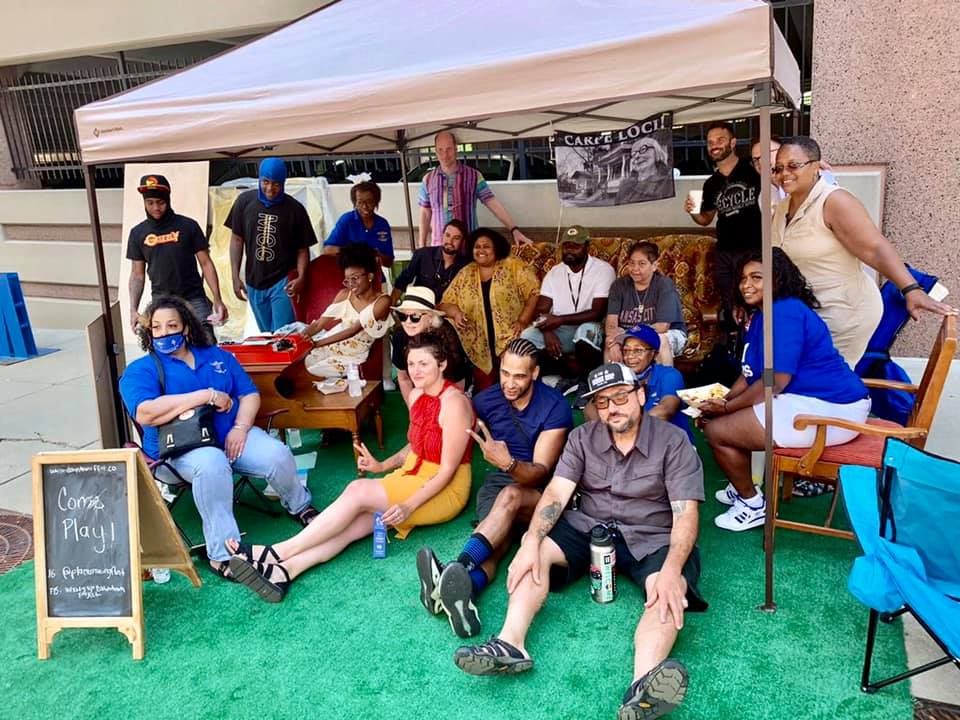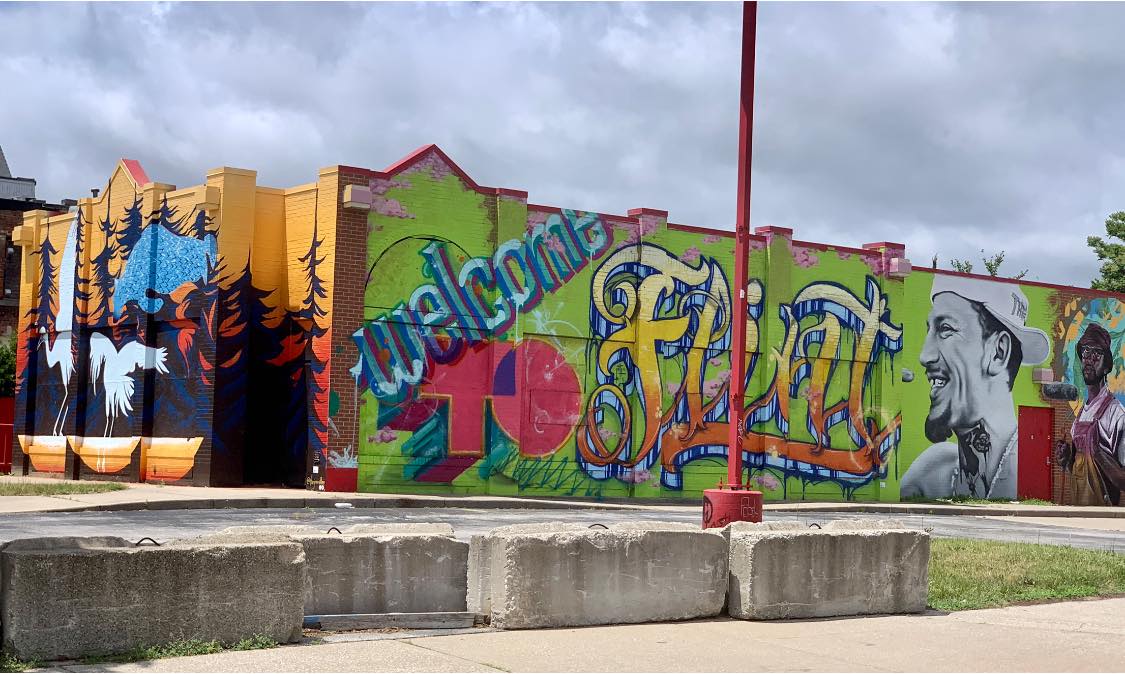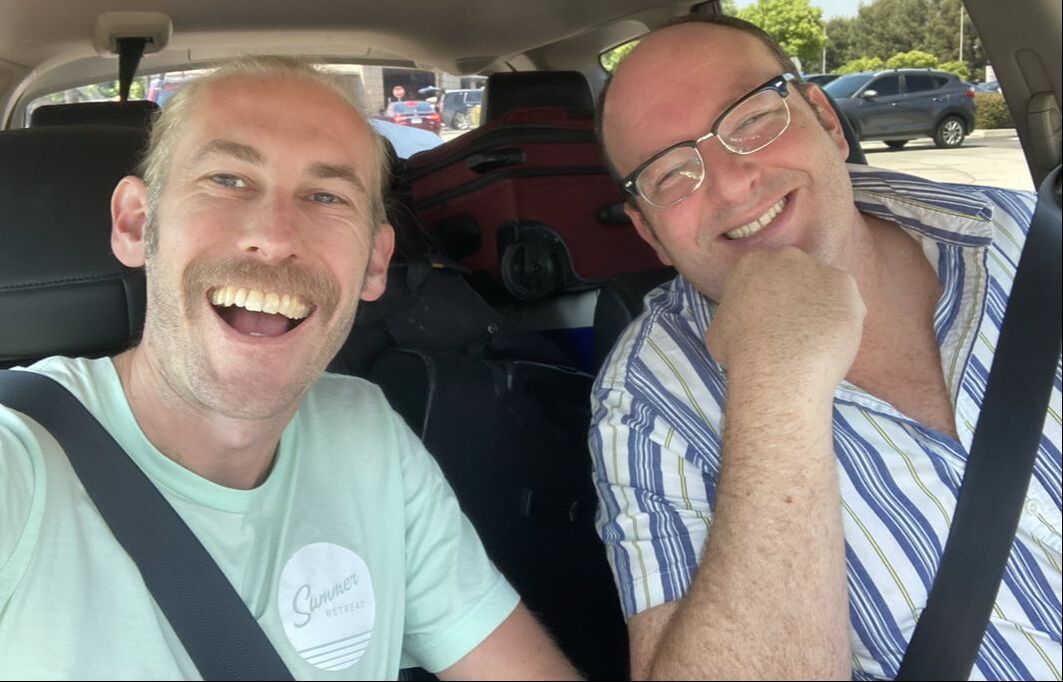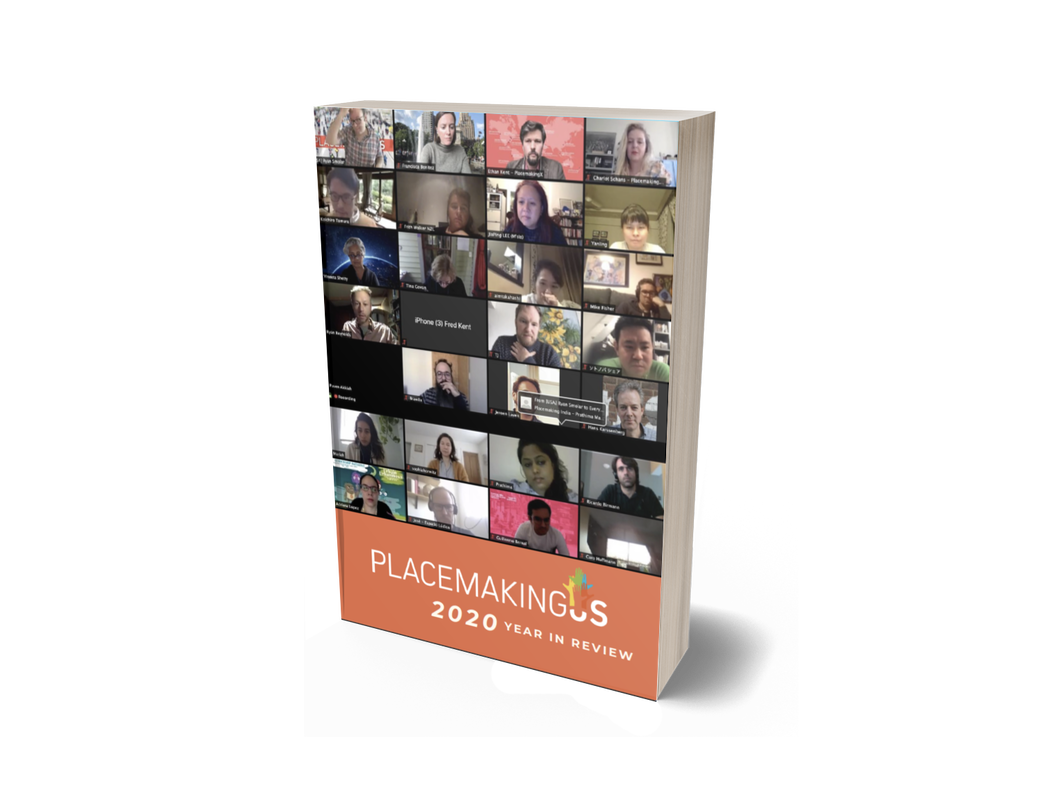|
Join us September 21-24, 2021 for an in-person, national placemaking convergence in Flint, Michigan! We’re hosting a movable feast of ideas, actions and energy to catalyze discussion and action around the city’s evolution from automobile-dominated to people-centric. What’s Up Downtown Flint is welcoming placemakers from across the country for an in-depth exploration of how the community is reuniting and growing around art, music, and culture and evolving both its social and urban fabric through the powerful efforts of the creative, Flintstone spirit. PlacemakingUS is bringing together 25 placemaking leaders from across the nation to elevate Flint’s ground game, share techniques and learn from this unique city’s history and future. Join us for a PLACEMAKING WEEK filled with workshops, discussions, idea-sharing around the following themes: - Connecting Neighborhoods - Makers and the Local Economy - Creative Placemaking - Streets for People - Healthy Cities - Downtown Management Why Flint?During the PlacemakingUS “Roadtrip for the Recovery,” we visited 60+ cities across the US and Flint proved to be one of the most exciting places experiencing a creative renaissance. We’re excited to bring placemakers here to be a part of Flint’s fundamental shift from an auto-oriented community planned by General Motors to one that is made by and for its people. At the same time all of this positivity ignites, Flint has been unfairly castigated as the poster child for modern metropolis problems including deindustrialization, depopulation, crime, racial segregation, and inequality. This US placemaking convergence will flex Flint’s placemaking muscles to help propel the local scene forward while we strengthen our national bonds and get re-inspired from this assembly. Join us in Flint this FallTICKETS: Tickets are on-sale now at PlacemakingUS.org/FlintPW. General Admission tickets are $250 and there is a “Pay What You Will” option available so that price is not a stumbling block for participation. COVID NOTICE: Attendees and participants are highly recommended to be vaccinated. Genesee County currently recommends wearing a mask when in-doors. ACCOMMODATIONS: We invite guests to book their stay at the Hilton Garden Inn in the newly renovated historic Genesee County Savings Bank building. Inquire with them about our room block rate. GETTING HERE: Flint is in Mid Michigan and is served by the Flint Bishop regional airport (which connects to flights from Chicago, Charlotte and Tampa) and is about 1-hour drive from the Detroit Metropolitan Airport. Uber/Lyft costs around $100 each way for this route. Let us know when you plan to arrive and we’ll try to pair you with another placemaker for rideshare. Event produced by What’s Up Downtown Flint in collaboration with PlacemakingUS and PlacemakingX.  Flint knows how to host: a welcome pop-up by Kady Yellow et al when we arrived on the "Roadtrip for the Recovery"
0 Comments
Fabulous Las Vegas, Nevada -- I couldn't imagine a more illusive place to start a national roadtrip in which my aim is to focus placemakers on the $350 billion jackpot local governments have struck with the American Rescue Plan Act (ARPA). As I ponied up to Las Vegas Boulevard, a designated All-American Road renowned for its world-famous glitz-and-glamour, I found the place not shuttered, but propped backed up and completely booming: American's liveliest Main Street was back, packed with crowds consuming foot-long frozen drinks under kleig lights infinitely up-lighting the dark desert sky. The hustle-and-bustle was a jarring awakening from my self-isolated slumber. Was COVID over? Was it all a dream? Was I just hallucinating off the vape smoke lingering in the air? In the distance, I could see the skylines of New York, the Eiffel Tower and a Great Pyramid -- all on the same street. And there were people there from everywhere too, except maybe Las Vegas itself. I was drowning in a shopping-frenzied fantasy land, detached from reality, and I remember saying something like, "what a beautifully tragic analogy for the American mindset of the recovery: checked-out with their checkbooks out!" Considering the assembled, I bet that the best use of my time while visiting this national spectacle of sin, was to spread our message wide and far by talking with visitors who'd been drawn to the the Boulevard's bright lights from cities and towns across the US. Starting outside the Mirage Hotel's famous Volcano fountain show, right where Vegas' red-hot growth of the last 30 years ignited, I collided with a couple from a small, suburban town near Kansas City. They were on their honeymoon: an "around the world" trip where they'd be visiting Paris, Venice and Bellagio, Italy without leaving "the Strip." As I shared the American Rescue Plan Act with them, the facts were quick to sink in, and they didn't have to take a leap into the deep end to tell me that they'd like to see funds used to fix their local community pool, a beloved gem that's been shut down since 2018 due to COVID and a pesky leak (read, potential capital improvement project mayhaps?). Outside Sigrfried & Roy's Secret Garden and Dolphin Habitat, I met two women from the Pacific Northwest and I schooled them on ARPA funds that will be coming down the pike. One of them was a teacher from Bellingham, Seattle who wanted to see funds go towards creating learning opportunities for children. Her friend from Bend, Oregon was concerend with housing for the homeless. I asked them both to pledge that they would write a letter to their electeds and they pinky sweared. Later at the hotel, a Latino family was swimming in the kidney-shaped pool. I dove right in and started chatting with them about their experience with the pandemic and thoughts on recovery. They were from Albuquerque, New Mexico. The patriarch, Ivan, owned an auto repair shop there, but he was curious about moving to California after I told him it's where I'm from. He cited liking his rapid commute in Albuquerque, but he was curious to live somewhere with a higher quality of life and more things to do. I asked him what he thought his city needed with ARPA funds in mind, and he painted the picture of an Albuquerque where anyone could get job training leading to gainful appointment. I went to bed that night excited that I'd had great dicussions with people from so many corners of America in one nigh, but I realized I hadn't met anyone on the Strip from Vegas proper. I spent some additional time the next day connecting with the locals, some contacts I had in the community -- an immigration lawyer, an architect and an artist/professor. The immigration lawyer and I met in a wealthy suburb of Vegas at a lifestyle center that was a manufactured replication of Tivoli, a town in Italy. He explained that the American immigration courts had recently re-opened and were already jam-packed and crazy just like before. It was discouraging to hear a system that wasn't working great before went right back to business as usual. I wondered, "Is there still an opportunity to pivot systems like immigration and placemaking or was COVID just a long burp in the middle of bad meal?" My architect friend couldn't meet-up. His tias were in town for his cousin's quincinera and they were at the park enjoying time together after the long year apart. Pity, I would have loved to debate the merits and foibles of fabrications like Tivoli Village and heard about his latest project, the world's largest guitar-shaped building. I met instead with an artist who works with the university arts department and has had work publically displayed in funkily-rehabilitated arts district. She did not know about the ARPA funds and said the local arts community was small and well-connected to each other, but was lacking some key institutional players like an art museum or contemporary collector base. She said the Desert Art Collective, a grassroots group doing things outside the city might have some interesting ideas. Something we'd hear a lot of down the road: that the creatives are fleeing traditional venues in favor of the fringes where the costs and permission thresholds were much lower than in capital-driven cities. The next morning I went to see the work of Meow Wolf, the urber-hip artist-lead, fantasy environment-builders of immersive Instagram-worthy experiences. Their Vegas location is called Omega Mart which utilizes the common metaphor of the supermarket to illustrate society's individualistic love of consumerism and the tendency of corporations, like Omega Mart's fictitious Dramcrop parent company, to overreach into our lives such that we're helpless but to find salvation in a box, a bottle or a purchase. The Zap! Pow! shopping-as-savior, morality tale splattered on the walls in five dimensions at Meow Wolf was apparent enough to hit anyone over the head, except maybe some of the visitors in attendance, many of whom seemed more wide-eyed and lost in its "trippy" spectacle than absorbing its warning. On this roadtrip, I'm expecting to see more from the recovery than what I saw in Vegas: everyone eager to return to business as usual, appetites bigger than ever for escape and hedonism, even if it is knowingly served up fresh by an evil corporation like Dramcorp, who steals your sould and sells it back to you in cheesy puff form according to Meow Wolf lore. But at these prices, who can resist? Current Riders: Ryan Smolar, Steven Homestead Listening to: Viva Las Vegas, Elvis Lo! We've packed our bags, loaded-up the placemobile and left Southern California for a three month roadtrip across America. Along the way, we're connecting with placemakers in 50+ cities and talking with everday folk to promote that 'people and places' play a part in our country's pandemic recovery. Carpe Loci Our motto is Carpe Loci, to "seize the place" in this rare moment when the status quo has been temporarilyy disrupted by COVID at the same time that $350 billion dollars has become available for community restoration. This windfall of federal cash has breached the dam in Washington DC and is flowing fast and fierce to our states, counties and cities. While a lot of this money is going directly to help people and businesses with immediate assistance and to replenish depleted local government accounts, there is a large amount left in the till which needs more community involvement if it's end results are to live up to the White House's ideals for this money to "build back better" as opposed to "business as usual." PlacemakingUS recognizes this moment and we are spreading the message far and wide across the land: we want the American Recovery to celebrate the old placemaker adage that, “Cities have the capability of providing something for everybody, only because, and only when, they are created by everybody.” What would it look like if every human could help co-create their environment to make their world a better place? Our strategy is to learn and spread how placemakers across the country are tackling problems and finding solutions. We're starting to call this their placemaker superpowers, that niche where they have natural proclivities, exhaustive experience and a passion to help others. On our recovery roadtrip, we hope to connect with you to learn about your superpowers and help spread your secrets to success across the country. What's your placemaking superpower? We want to look forward to visiting your town as much as we are excited to visit:
We hope we will connect with you along the way and create a meaningful interaction that helps imbue locals to get the people and places they love prioritized in their town's take on the American Rescue Plan. Keep checking here and on Instagram and our Facebook Group to see what we're learning and. Current Riders: Ryan Smolar, Steven Homestead Listening to: On the Road Again, Canned Heat We're visiting 50 cities to meet with local placemakers and communities.As the United States emerges from the pandemic, PlacemakingUS is checking in on cities and towns across the land to help ensure that people and places remain at the heart of the American recovery. We're going on a national whistle-stop tour to make sure placemakers are well-equipped and networked in their locales to utilize this incredible moment. We're taking this massive trip to diffuse innovation and promote the creation of authentic places and to help ensure post-pandemic urbanism has something for everyone, because it is created by everyone. Summer 2021 Tour Dates*
PlacemakingUS is inviting everyone to participate in the fun of this roadtrip. If we're coming to your town, please get in touch so we can connect. We've listed a bunch of ways to get involved with the trip on our Summer Recovery Roadtrip headquarters page. You can drive along with us, host a meetup with us or even help sponsor the trip. Please help us hook in with your community in a meaningful way.
We started PlacemakingUS at 2019's International Placemaking Week with a mission to bring together placemakers from US cities and around the world. We were inspired by the launches of Placemaking Europe, Placemaking Asia and a dozen other regional placemaking networks that span the globe in collaboration through PlacemakingX. Since Covid-19 struck in 2020, we quickly dashed our in-person plans for Placemaking Festivals in Portland, Long Beach and Philadelphia, and pivoted towards online interactions including webinars, international placemaking "tool tests," Zoom workgroups, in-person check-ins when safe, and we even commissioned a series of volunteer cross-country projects. Facing an incredibly unique set of circumstances in our first full-year, we are excited to share the work that was done towards our goal of fostering a network to bring US-based placemakers together to spread innovations and support and share in the good work from across the country and around the globe. Last year was a derailing surprise to us all, but 2020 also created a unique moment to launch our PlacemakingUS network. Covid-19 both helped and hindered our hit-the-ground-running start to PlacemakingUS' work connecting US practitioners to support each other and connect with our sister global placemaking networks organized under PlacemakingX. Please take a moment to read about the activities and interactions the network is fostering and the cool programs and projects that we were able to collaborate on, learn and share together. We look forward to working with you in 2021 to continue and build upon this exciting momentum.
PlacemakingUS recently connected some resident placemakers via phone who have been having trouble getting a holler-back from their respective City Halls. These are neighborhood leaders, the kinda folks who organize neighborhood clean-ups and trunk-or-treats, follow-up with city staff to thank them and act as the eyes and ears of code enforcement. These leaders gathered to gripe that they try and do as much for their neighborhoods as they can, but they can't seem to get quality, timely responses from the public realm, city-responsible departments like Public Works and Planning when they need them. Even when they elevate issues, and call their representatives or their staffers, they still can't get a holler-back these days. They're frustrated. They're ready to give-up. And we can't have that, because it's the agency of these small actors who help prop up every special square of urban fabric. So we got a few of them together and they spit-balled what's worked and what hasn't. Here are some of the juicier morsels: #1 Strategy - The Art of the CCTheir best strategy for evoking a quick response from local government was by "CCing" the right mix of people in an email including the relevant elected and staff as well as interested community members or stakeholders. They didn't know why this worked so well -- if it invoked some form of competitiveness or if it just looked like a total clusterf$# waiting to happen such that somebody had to grab the wheel and correct the course by eliciting helpful, useful information! It must be said, some caution should be exercised with this strategy as its overuse and or lack of tact can take things totally off the rails. #2 Strategy - Beat Your Own DrumThe group recognized that electeds and city staff more quickly address items creating heat online or controversy in the media. They're also quick to jump in and act heroically when a story is framed the right way. We talked about drumming up your own "solutions-oriented journalism" and social media and putting it out there to make the community's perspective more prescient with more people. #3 Strategy - Build Relationships and Recognize ContributionsWe all agreed that more city employees, electeds and public servants are good and helpful than the occasional difficult egg and that they are mostly incredibly overwhelmed by work, dire requests and even threats. Therefore, the ultimate strategy and only long-term play is to build relationships, create opportunities to spend time together and find ways to visibilize good work and recognize contributions. These actions help create an upward spiral of partnerships, trust, transparency and shared ownership. There were many other ideas that were shared among the group, but these seem like some of the powerful, positive ones that could apply broadly. Please feel free to contribute your own strategies or examples!
Article by Ryan Smolar The PlaceSpeak Series consists of report-outs from topical conversations we organize and host between placemakers to share knowledge and tactics. |
AuthorsArticles contributed by placemaking experts across the US Archives
April 2024
Categories |
PlacemakingUS
|
PlacemakingUS Newsletters
|
















 RSS Feed
RSS Feed
